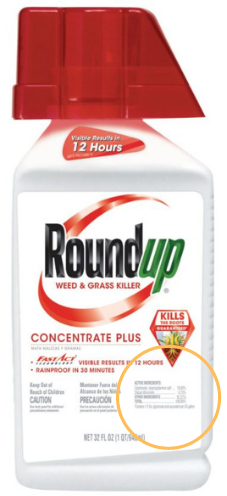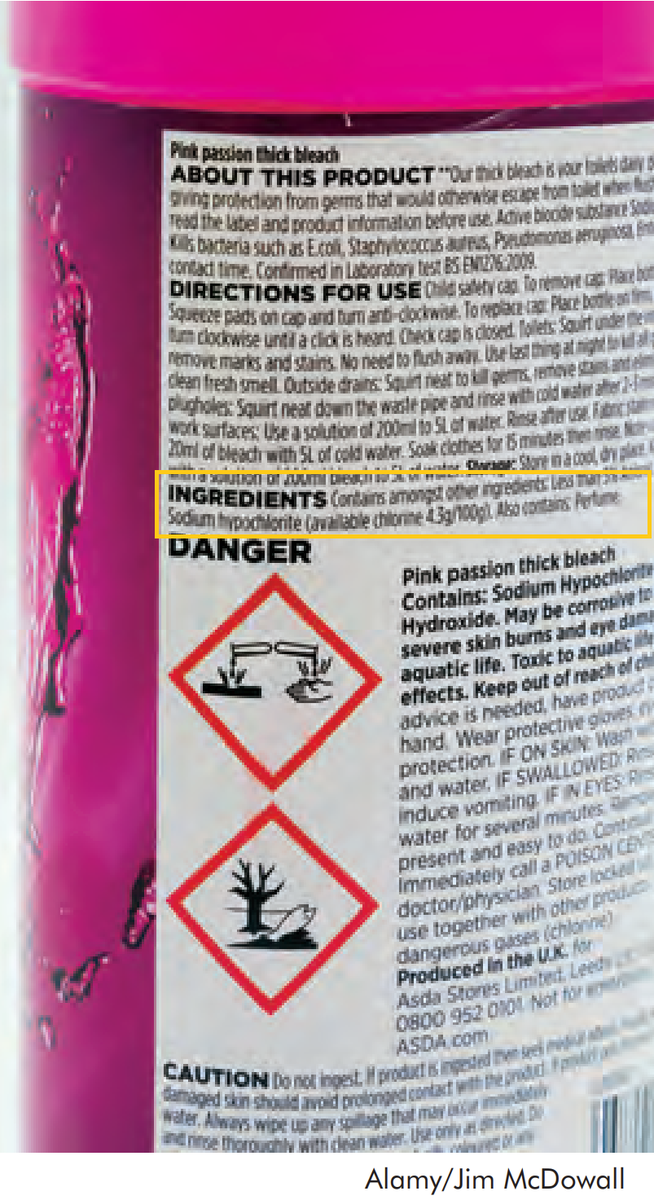Gateway on Pesticide Hazards and Safe Pest Management
How To Find Ingredients in Pesticide Products
Beyond Pesticides offers resources below to evaluate the health and ecological effects of specific chemical exposure from ACTIVE INGREDIENTS in pesticide products, as well as regulatory information and supporting scientific documents. Because various pesticide products can contain more than one active ingredient, it is important to READ the LABEL to determine chemical components.
With 192 different active ingredients and counting, it is essential to establish the connection between the use of these chemicals and their respective hazards.
View the step-by-step guide on how to search for the active ingredient(s) in pesticide products below:
- Go to U.S. EPA's Pesticide Product and Label System and enter the product name. The generic product name may vary.
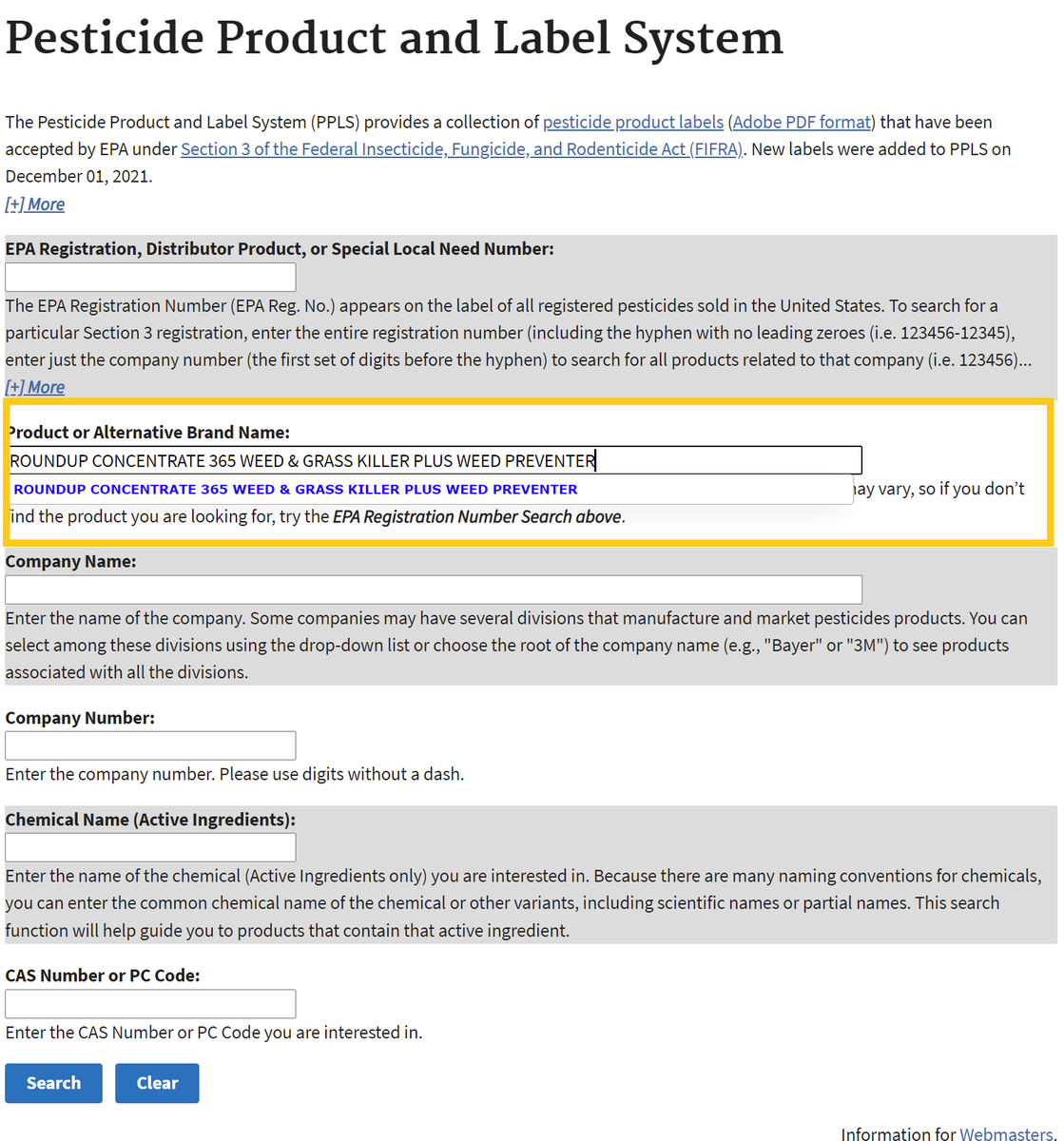
- After searching, click on the chemical ingredients tab or the link for the most recent label to find Active Ingredients.
Chemical List Label List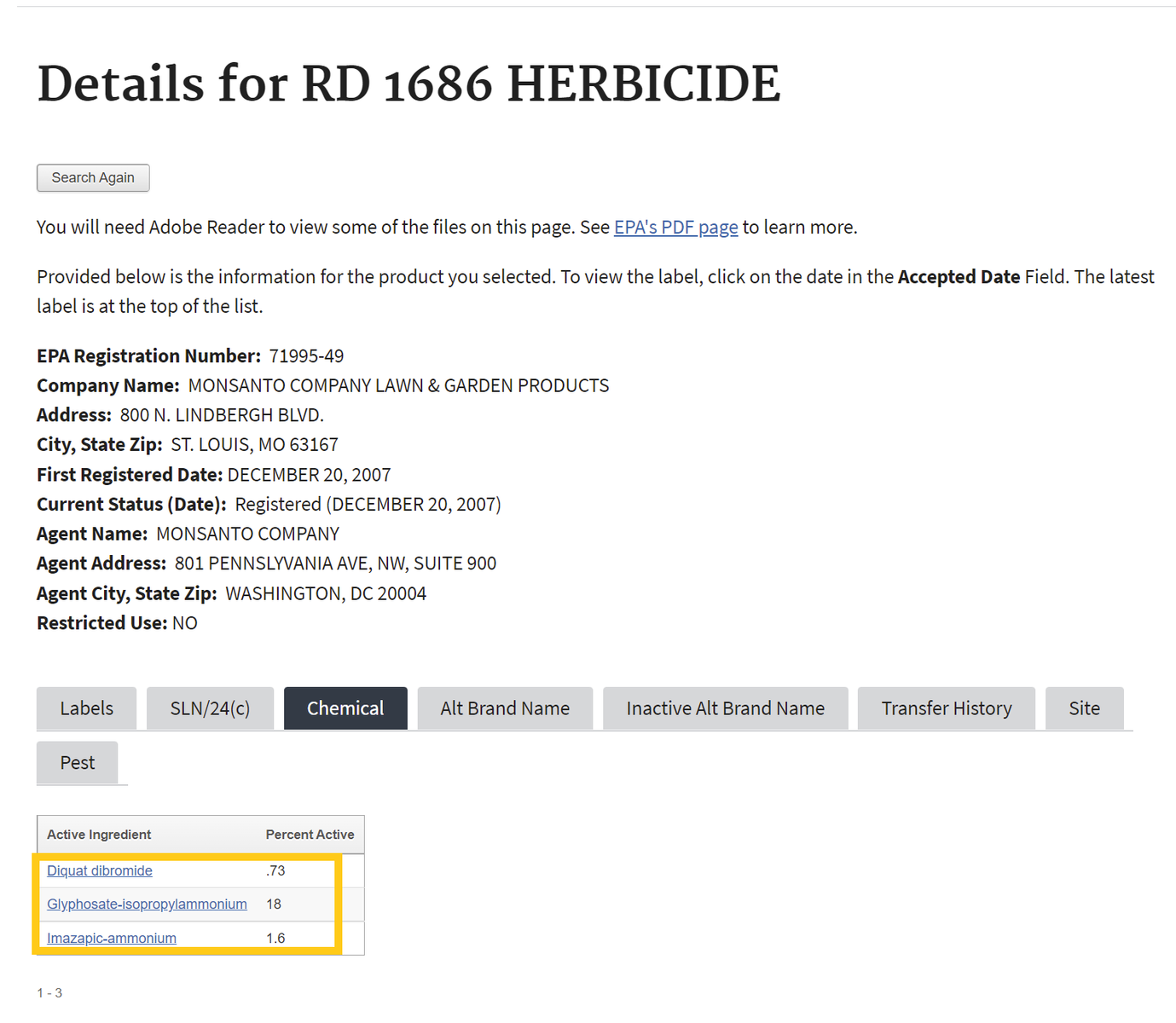
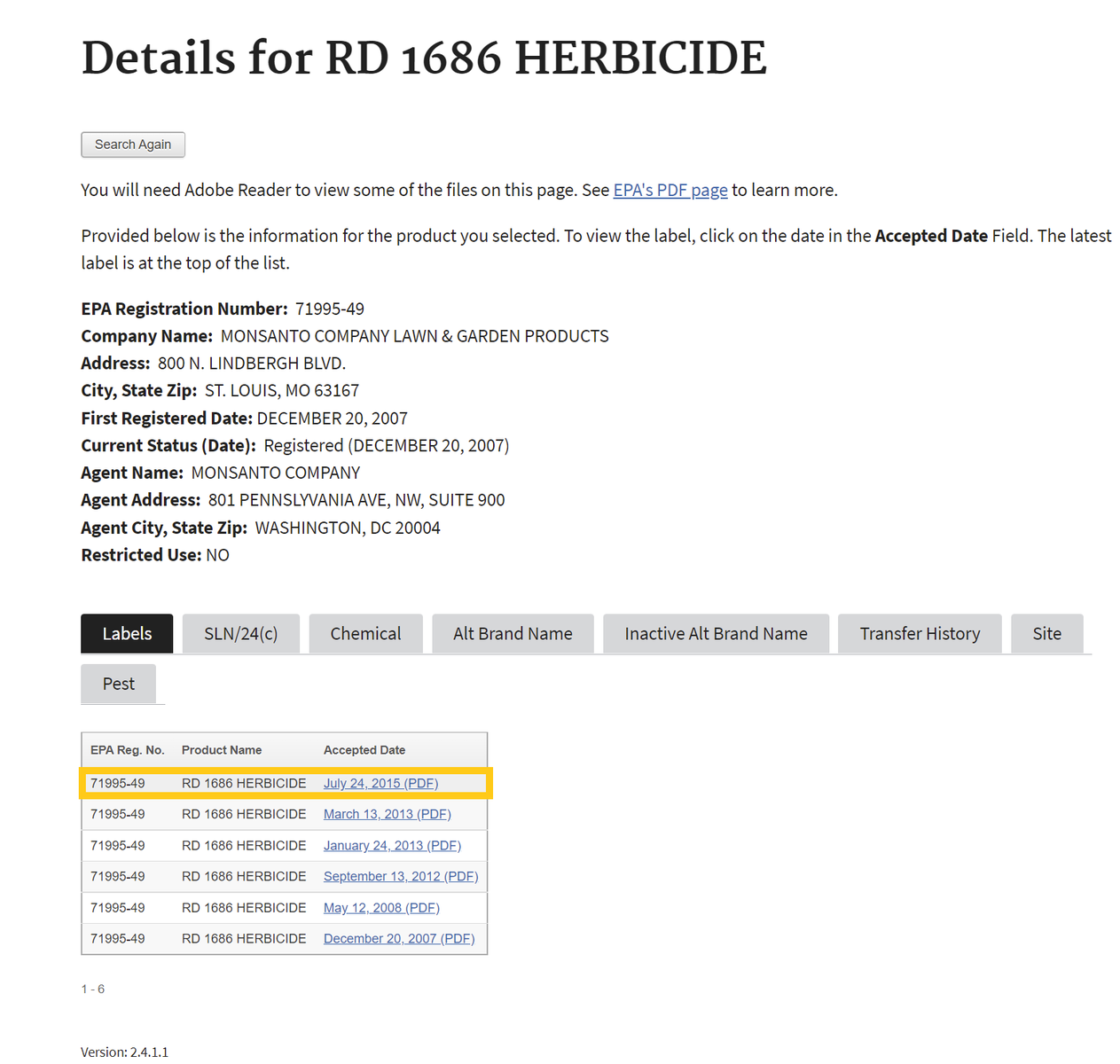
If one selects the chemical ingredients tab, skip to Step 4 . If not, proceed to step number 3 - To find the active ingredient(s) on the label, search for the page in the document containing the date of registration. Usually, the active ingredients section occurs within the first few pages of the label document.
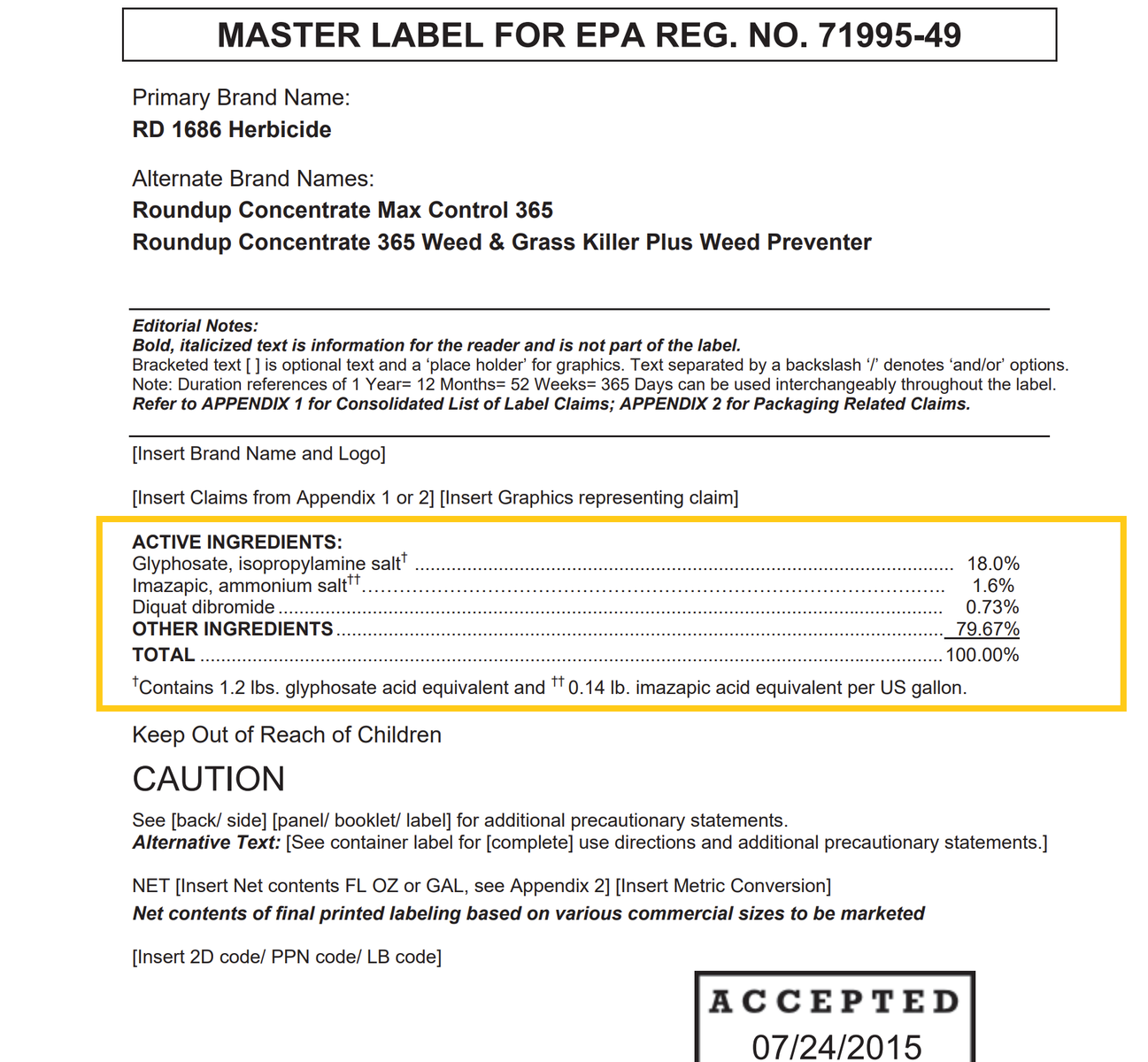
- Return to the Beyond Pesticides Gateway and search for the active ingredient name in the yellow box to the right or from the list below.
Methomyl
General Information
- Product Names:
- Chemical Class: Carbamate
- Uses: Restricted use pesticide. Controls insect pests on field, vegetable, and orchard crops; turf (sod farms only); livestock quarters; commercial premises; and refuse containers.
- Alternatives: Organic agriculture
- Beyond Pesticides rating: Toxic
Health and Environmental Effects
- Cancer: Not documented
- Endocrine Disruption: Yes (30, 36)
- Reproductive Effects: Not documented
- Neurotoxicity: Yes (4)
- Kidney/Liver Damage: Yes (4)
- Sensitizer/ Irritant: Yes (4)
- Birth/Developmental: Not documented
- Detected in Groundwater: Not documented
- Potential Leacher: Not documented
- Toxic to Birds: Yes (8)
- Toxic to Fish/Aquatic Organisms: Yes (8)
- Toxic to Bees: Yes (57)
Additional Information
- Regulatory Status:
- Supporting information:
- Extoxnet Methomyl Factsheet (Extension Toxicology Network)
- PAN Pesticides Database - Methomyl (Pesticide Action Network)
- Studies:
- Effect of methomyl on the biochemical and reproductive parameters in pregnancy rats: the protective role of Pistacia Lentiscus oil. Mosbah, R., Mokrani, N., Mosbahi, I., Rouabhi, S. and Mantovani, A., 2016. In 18th European Congress of Endocrinology (Vol. 41). BioScientifica.
- Investigating the Acute Metabolic Effects of the N-Methyl Carbamate Insecticide, Methomyl, on Mouse Liver. Groswald, A.M. et al. (2023) Investigating the acute metabolic effects of the N-methyl carbamate insecticide, methomyl, on Mouse Liver, Metabolites. Available at: https://www.ncbi.nlm.nih.gov/pmc/articles/PMC10456691/.
- Mixture effects of thiamethoxam and seven pesticides with different modes of action on honey bees (Aplis mellifera). Li, W. et al. (2023) Mixture effects of thiamethoxam and seven pesticides with different modes of action on honey bees (Aplis mellifera), Scientific Reports. Available at: https://www.nature.com/articles/s41598-023-29837-w#ref-CR30.
- Unveiling bee pollen's contamination with pesticides and mycotoxins: Current analytical procedures, results and regulation. Carrera, M. et al. (2024) Unveiling bee pollen’s contamination with pesticides and mycotoxins: Current analytical procedures, results and regulation, Trends in Analytical Chemistry. Available at: https://www.sciencedirect.com/science/article/abs/pii/S0165993624004187.
- A Th2-type immune response and low-grade systemic inflammatory reaction as potential immunotoxic effects in intensive agriculture farmers exposed to pesticides . Lozano-Paniagua, D. et al. (2024) ‘A th2-type immune response and low-grade systemic inflammatory reaction as potential immunotoxic effects in intensive agriculture farmers exposed to pesticides’, Science of The Total Environment, 938, p. 173545. doi:10.1016/j.scitotenv.2024.173545.
- Pesticide-Induced Inflammation at a Glance. Lopes-Ferreira, M. et al. (2023) ‘Pesticide-induced inflammation at a glance’, Toxics, 11(11), p. 896. doi:10.3390/toxics11110896.
- Pesticide exposure and sleep disorder: A cross-sectional study among Thai farmers. Juntarawijit, C. et al. (2025) Pesticide exposure and sleep disorder: A cross-sectional study among Thai farmers, Heliyon. Available at: https://www.cell.com/heliyon/fulltext/S2405-8440(24)17154-X.
- Pesticide Residues on Three Cut Flower Species and Potential Exposure of Florists in Belgium. Toumi, K., Vleminckx, C., Van Loco, J., & Schiffers, B. (2016). Pesticide Residues on Three Cut Flower Species and Potential Exposure of Florists in Belgium. International Journal of Environmental Research and Public Health, 13(10), 943. https://doi.org/10.3390/ijerph13100943
- Prenatal residential proximity to endocrine disrupting agricultural pesticides and menstrual cycle characteristics among Latina adolescents in California. Paul, J. et al. (2025) Prenatal residential proximity to endocrine disrupting agricultural pesticides and menstrual cycle characteristics among Latina adolescents in California, American Journal of Epidemiology. Available at: https://academic.oup.com/aje/advance-article/doi/10.1093/aje/kwaf059/8083004.
- Effect of methomyl formulation, a carbamate pesticide on ovarian follicular development and fertility in albino mice. Shanthalatha, A., Madhuranath, B. N., & Yajurvedi, H. N. (2012). Effect of methomyl formulation, a carbamate pesticide on ovarian follicular development and fertility in albino mice. Journal of environmental biology, 33(1), 33–37.
- Assessment of genetic damage levels in agricultural workers exposed to pesticides in Paraíba, Brazil. Carvalho-Gonçalves, L. et al. (2025) Assessment of genetic damage levels in agricultural workers exposed to pesticides in Paraíba, Brazil, Environmental Toxicology and Pharmacology. Available at: https://www.sciencedirect.com/science/article/abs/pii/S1382668925000900.
- Methomyl-induced developmental and cardiovascular toxicity in zebrafish via immune response, oxidative stress, and apoptosis. Lee, H. et al. (2025) Methomyl-induced developmental and cardiovascular toxicity in zebrafish via immune response, oxidative stress, and apoptosis, Science of The Total Environment. Available at: https://www.sciencedirect.com/science/article/abs/pii/S0048969725018558.
- Methomyl, a carbamate insecticide, forms oxygenated transformation products that inhibit acetylcholinesterase upon chlorination. Matsushita, T. et al. (2025) Methomyl, a carbamate insecticide, forms oxygenated transformation products that inhibit acetylcholinesterase upon chlorination, Water Research. Available at: https://www.sciencedirect.com/science/article/abs/pii/S0043135425009765.








.png)
